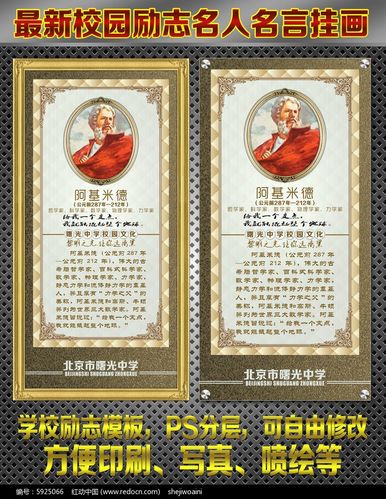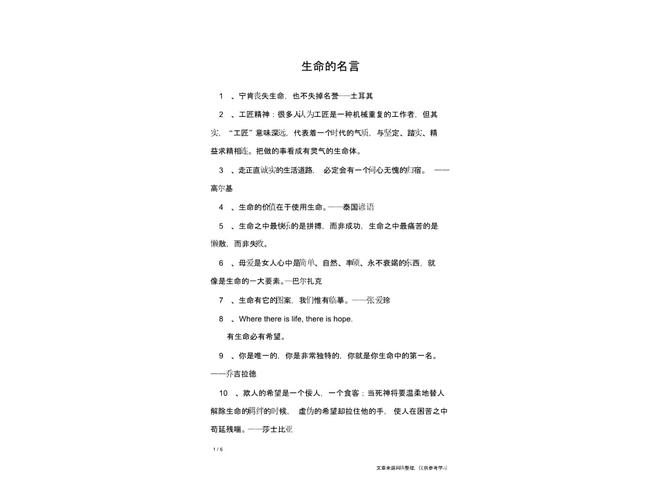
词汇翻译技巧
一、词义的选择(Diction)
1. 注意词的搭配
汉语和英语两种语言在长期使用过程中形成了各自的固定词组和
搭配,所以不能把汉语字词的搭配用法生搬硬套到英语译文中去。
汉、英两种语言的动宾搭配也有不同:
例:学文化 learn to read and write
学知识 acquire knowledge
学外语 study a foreign language
学鸟叫 imitate birds’ crying
同样:发展经济 develop our economy
开发水资源 develop the water resources
冲洗胶卷 develop a film
展开说明 develop an idea
2. 根据上下文正确理解原文的词义
有些汉语说法英译是按字面翻译,具体翻译时应视具体语境而定。
例1:有市场、有效益的速度,才是真正的发展,才是硬道理。
译文:Sound economic growth must be bad on strong market demand
and good economic returns. This is a .
注意:“硬道理”也可根据我们中国文化的“异化”理解,翻译成:
.
例2:这种情况必须改变
译文:This must change.
分析:此处要正确理解原文的词义。汉语措辞中的“情况”一词的基本
意义与英语中的circumstance, situation, condition等词相近,但是究竟
怎样翻译,还需要根据上下文来决定。
二、词的增补(Amplification)
词的增补又常叫增译/增词法,是为使译文准确、通顺、达意。
增译有语义性增译修辞性增译,还有注释性增译(文内阐释或文中夹
注)
1. 增补主语
汉语中无主语的句子很多,汉译英时要根据上下文的意思选择适当
的代词或名词补做主语。增加什么主语取决于上下文。
例1:知己知彼,百战不殆
译:
2. 增补非人称的或强调句中的it
it可以指天气、时间,还常用来表示强调、代替不定式等。
例2:中国人喝酒一般比较热闹。
译:
3. 增补做宾语的代词或先行宾语it
汉语里只要从上下文能理解清楚,常常可以省略宾语,但英语中凡
是及物动词都得有宾语,因此要增补宾语。
例3:我觉得你经常帮助别人是很好的。
译:
4. 增补物主代词
汉语里的物主代词常常可以省略,但英语中但凡是说到一个人的所
有物时总要在前面加上物主代词。
例4:该国综合国力大增。
译:
5. 增补并列连词
汉语语言精练,并列连词用的很少,但译为英语时,需要增补。
例5:中国画是诗、书(calligraphy)、画、印(al carving)相结合
的艺术。因此,它不仅能美化人们的生活,而且能给人们带来高雅的
情趣和艺术享受。
译:
6. 增补从属连词或关系代词等
汉语在表达上的从属关系是蕴涵在句子里的,翻译成英语时必须明
确表达出来,尤其是在定语从句中。注意关系代词是汉语中没有的英
语表达方法。
例6:中国画(traditional Chine painting)是用毛笔、墨及颜料
(pigment),在宣纸(Xuan paper)或绢(silk)上画出的画。
译:
7. 增补连系动词
汉语的形容词可以直接做谓语,但英语中却要系动词与形容词连
用。
例7:昨天元旦,我们都很高兴。
译:
8. 增补介词
英语中很多需要用介词的地方在汉语中多用动词代替,因此英译汉
时,可根据具体语境省略原文中的介词,有时则可适当增加一些语气
助词;汉译英则相反,多要省略原文的语气助词,而根据英语的行文
需要适当增加介词。
例8:一架从昆明起飞的小飞机载着我们飞越群山,把我们送到了景
洪。
译:
9. 增补冠词
汉语中没有冠词,翻译成英语时往往需要增补必要的冠词。
例9:该城市工业人口稠密。
译:
10. 为了适应英语句子的逻辑要求而增词
英语句子各部分逻辑关系比较严谨,在形式上主次分明,而汉语句
子的结构比较自由,如把汉语直译成英语,不增加英语中必要的词,
就会使句子意思不清楚。
例10:子曰:“学而不思则罔,思而不学则殆”。
译:
三、词的省译(Omission)
与增译相对,省译/省略法是指在将原文中一些不符合译文习惯或
在译文中显得多余的词汇或表达照直译出的话,会使译文显得累赘生
硬甚至发生曲解的情况下,需要使用“省译”的手法,将原文中这些
词汇和表达省去不译,以保译文的准确通顺。相对而言,由于汉英两
种语言的差异,省译法似乎在汉译英中使用得多一些。
1. 省译需遵循的原则
省略词语并不意味着可以随意删减原文的词句,而必须遵守一些原
则。一般来说,省去的词语必须是:
(1)在译文中看来是可有可无的,或是多余的;
(2)其意思已经包含在上下文里的;
(3)其含义在译文中是不言而喻的。
例1:我们要培养分析问题、解决问题的能力。
译文:
2. 省译含义重复的词语
汉语中为了讲究句子的平衡、气势、韵调、常常使用排比、重复等
修辞手段。如果照样一连串译成英语,往往不符合英语语言习惯。因
此翻译时,原文中含义重复的词语往往只译出其中一个,其他可以省
略不译。
例2:青年人的觉悟程度如何,道德品质如何,知识水平如何,直接
关系着社会主义建设的速度,关系着祖国的未来。
译文:
3. 省译汉语修饰词
还有一种情况,就是汉语的修饰词(主要是形容词、副词)省译,
也属于修辞性省译的范畴。英语最忌讳“同义重复”现象,很多汉语
的修饰词在英语中不能照译。对这种情况或省译,或改译,或通过上
下文照应,不可一味直译。
4. 省略原文中表示范畴的词语
汉语中有些名词,如“任务”、“工作”、“情况”、“状态”、“问题”、
“局面”等词通常具有的含义,自然应当照译,但它们用来表明范畴
时,则失去了具体含义,一般可以省略不译。
例4:中国政府历来重视环境保护工作。
译文:
四、语类转换法(Conversion)
汉语单词没有词形变化,而英语单词却有。翻译时有时候就必须进
行词形的转换。其次,汉语句子多用动词,而英语句子则多用其他词
性的词,这也意味着翻译时英语句子中的名词、形容词、副词或介词
可能要译成汉语的动词。
1. 名词转动词
1) 由于英汉语言习惯不同,有些表达在汉语中常用名词,而在
英语中用动词或其他词性比较合适,所以要进行转换。
例1:他的讲演给听众的印象很深。
译文:
2) 英语中某些感官动词,如look, sound, taste, smell, feel等,在
译成汉语时,可考虑转换成名词。而汉语翻译成英语时,要
把名词译成感官动词。
例2:这些花气味芬芳
译文:
2. 动词转名词
英语中有些动词是由名词派生或转借过来的(如characterize,
symbolize, design, figure, impress, behave, witness, mean, cost等),
这些动词在英语中用得相当普遍,但在汉语中有时候却很难找到,
相匹配的词来翻译。因此,译成英语时,常常要换成“弱化动词+
名词”的形式。
例3:改革者需要具体的证据,来证明人民生活水平日益提高。
译文:
3. 形容词或副词转名词
在汉译英时有时为了语法结构和修辞上的需要,也可以把汉语
形容词或副词译成英语名词。
例4:这次实验是极为成功的。
译文:
4. 动词转形容词
汉语中一些表示知觉、情感等心理状态的动词,往往可以转换
成英语形容词,通常多以“be+形容词”的结构表达。
例5:我们不满足于现有的成就。
译文:
5. 动词转介词(短语)
重意合的汉语动词很丰富,而重形合的英语则介词丰富。汉语
动词译为英语的介词是最常见的。汉译英时介词使用得当可以使译
文准确、简洁、流畅。例如:“用”对应的英语动词有u, utilize,
employ, apply等,但许多情况下可以转换成介词。
1) 用右手写字:to write with right hand
2) 汽车用汽油开动:Cars run on petrol
3) 用特快专递邮寄。Send by express (mail rvice)
4) 不要用铅笔写。Don’t write in pencil.
6. 形容词或副词转换成其他词
英语中有些“介词+名词”结构译成汉语后需要转换成副词,
汉译英则相反,往往不一定译为以-ly结尾的副词,而是转换成“介
词+名词”结构。
例6:中国画按内容分,主要有人物画、山水画、花鸟画三大类。
译文:
五、词的替代法 (Substitution)
汉语常出于修辞的需要,用同一词语或同一结构的重复来加强效
果,形成大量的平行对偶结构;而英语则常用代词代替名词以减少重
复,或用介词作部分重复来代替动词、名词短语,甚至通过上下文的
照应来避免重复。
汉译英时可以采用替代法处理汉语的重复部分。替代指用替代形式
去替代上下文出现过的词语,可分为名词性替代、动词性替代和分句
性替代。
1. 名词性替代
在英语中,常见的名词性代词有one, ones和the same.
例1:我曾听到过一些我们这个时代里的奇怪的故事。但这故事可能
是最奇怪的了。
译文:
2. 动词性替代
通常用助动词、情态动词或so来替代重复的动词部分。
例2:A:他们搬家了吗?
B:他们搬了书桌,但仅此而已
译文:A:Have they removed their furniture?
B:
3. 分句性替代
用某些词来代替整个分句,通常用so, vice versa(反之亦然)等来
表达。
例3:为了推动中美关系的发展,中国需要进一步了解美国,美国也
需要进一步了解中国。
译文:
NO. 1
孔子(Confucius)是春秋时期(the Spring and Autumn Period)的大思
想家、大教育家和儒家学派(Confucianism)的创始人,是古代中国
人心目中的圣人。孔子的言论和生平活动记录在由他的弟子或再传弟
子编成的《论语》(The Analects)一书中。《论语》是中国古代文化的
经典著作。在孔子之后几千年的中国历史上,没有哪一位思想家、文
学家和政治家不受《论语》的影响。不研究《论语》,就不能真正把握
中国几千年的传统文化。
As a great thinker, educator and founder of Confucianism during the
Spring and Autumn Period, Confucius is a sage to the ancient Chine
people. His words and life story were recorded by his disciples and their
students in The Analects. As an enduring classic of Chine culture, The
Analects has influenced all thinkers, writers and politicians in the
thousand years’ Chine history after Confucius. No scholar could truly
understand this long-standing culture or the inner world of the ancient
Chine without this book.
NO. 2
大约在两千多年前,中国就出现了蜡染(wax printing)。在中国服饰
中,蜡染是一种流传时间长、流行范围大、使用领域广的服装工艺。
蜡染是在布匹着色的过程中,以蜂蜡(beeswax)作为防止染色的材料。
蜂蜡之后,会产生一些裂纹,这些裂纹在染色过程中渗透进靛蓝
色,于是形成了如冰花式样的美妙纹理。这样自然天成的纹理可以说
是蜡染的灵魂所在。
Wax printing appeared in China about 2,000 years ago. Wax printing has
long been a widespread technique ud in the history of Chine fashion.
During the dyeing process, beeswax is applied to prevent some parts of the
cloth form being dyed. When the beeswax dries, it develops cracks, which
absorb indigo in the process of dyeing, thus forming the beautiful natural
lines rembling breaking ice. The naturally formed lines reprent the
beauty and soul of wax printing.
NO. 3
景泰蓝(cloisonné)是驰名中外的传统工艺,它集青铜艺术、瓷器和
雕刻诸种工艺制作技巧于一身,是一门地道的北京绝活。它是收藏家
收藏的佳品,也是人们居家使用的精美物品。这项工艺始创于明代景
泰年间,初创时的颜色主要是蓝色,故得名“景泰蓝”。到了成化年间,
景泰蓝技术进一步成熟,这个时期的作品沉稳凝重又透明灵动,而且
铜胎也极为讲究。
Ming Dynasty, with the main color ud being blue, hence the name
“Jingtai Blue” as it became known later on. By the time of the Chenghua
reign, the techniques for making cloisonné were further developed, with
products of this period looking heavy and dignified yet not lacking
ineloquence or vividness. Moreover, its cast was always made of choice
copper.
NO. 4
西塘在浙江嘉兴,位于上海和杭州之间。这个占地规模并不大的古镇
有着悠久的历史,它初建于春秋时期(the Spring and Autumn Period),
位于吴国和越国的交界处。西塘的大致规模在宋代之前就已经形成,
今所见西塘著名的桥梁望仙桥(Wangxian Bridge)就是宋代的遗迹。
在明清时期,西塘既是远近闻名的鱼米之乡,又是著名的丝绸制造之
地,还以制陶业(ceramics)而享誉全国。
Xitang is located in Jiaxing, Zhejiang Province, between Shanghai and
Hangzhou. Though small in size, this ancient town boasts a long history. It
was first built during the Spring and Autumn Period, at the border between
the states of Wu and Yue. The prent layout had already taken shape
before the Song Dynasty, and the famous Wangxian Bridge in Xitang is a
legacy of the Song Dynasty. By the Ming and Qing Dynasties, Xitang had
become a well-known trade center for farm products, silks and ceramics,
all produced in the surrounding areas and famous throughout the country.
NO.5
秧歌舞(Yangko dance)是中国汉族的一种传统民间舞蹈,通常在北
方省份表演。秧歌舞者通常穿上明亮多彩的表演服装,他们的表演动
作迅速有力。在农历春节、元宵节等节日期间,人们一旦听到锣鼓声,
不管外面天气有多冷,他们都会蜂拥到街上观看秧歌舞表演。近年来,
中国东北某些城市的老年人自发组织了秧歌队,队员常年通过跳舞来
保持健康,同时他们也乐在其中。
The Yangko dance is a traditional folk dance of the Han Chine,
commonly performed in the northern provinces. Yangko dancers usually
wear bright and colorful costumes, and their movements are vigorous and
quick. During holidays, such as the lunar New Year and the Lantern
Festival, as soon as people hear the sound of drums and gongs they swarm
into the streets to watch Yangko dance performances, no matter how cold
it is outside. In recent years, elderly people in some cities in Northeast
China have been organizing themlves into Yangko teams, with the
dancers enjoying themlves while keeping fit all year round.
NO. 6
中国的青铜器时代(Bronze Age)从夏开始,经历商、西周到春秋时
期(the Spring and Autumn Period),前后持续了一千五百多年的时间。
大量出土的青铜器物表明,中国创造了灿烂的青铜文明。这些青铜器
物不仅有丰富的政治和宗教内涵,而且还具有很高的艺术价值。今藏
于中国历史博物馆的大盂鼎(the Great Ding for Yu)是中国青铜器时
代的代表性作品之一。它是西周康王(King Kang)时期的作品,距今
大约有三千多年。
The Bronze Age in China lasted more than 1,500 years, from the Xia
through the Shang and Western Zhou Dynasties, to the Spring and Autumn
Period. Large numbers of unearthed artifacts indicate a high level of
ancient bronze civilization in the country. They feature rich political and
religious themes, and are of high artistic value. A reprentative example
is the Great Ding for Yu, which is now prerved in the Muum of
Chine History. It was cast about 3,000 years ago during the reign of
King Kang of Western Zhou Dynasty.
NO. 7
1911 年,中国爆发了历史上的第一次资产阶级革命——辛亥革命(the
Revolution of 1911),它推翻了中国封建社会的最后一个朝代——清
朝,废除了中国延续了2000 多年的封建帝制,建立了中国的第一个
民主共和国——中华民国。民国政府成立以后,要求全国人民都剪掉
头上的辫子(queues),选择自己喜欢的发型。至此,在中国延续了
280 多年的辫子法令终于被解除。
In 1911, the first bourgeois revolution in Chine history — the
Revolution of 1911 broke out. The last dynasty of the Chine feudal
society, Qing Dynasty, was over-thrown and the monarch system that had
a history of more than 2,000 years was abolished. The Republic of China,
the first democratic republic in China, was founded in 1912. After its
foundation, the government of Republic of China had required the citizens
to cut off their queues and make the haircut they liked. Since then, the
wearing-queue order that had lasted for more than 280 years in China has
been abolished.
NO. 8
出现在中国五代时期的妇女缠足(foot-binding),虽然最初是宫廷舞女
为了方便跳舞而采用的一种行为,但由于有人认为脚裹起来更好看,
所有很多人就开始效仿起来。到了宋代,封建社会的纲常思想非常严
重,受到男尊女卑的封建礼教的影响,女子裹脚的风气被传承下来,
并逐渐成为一种习俗。为了与妇女的小脚相适应,宋代还出现了专门
为裹足妇女制作的弓鞋(gongxie)。
The practice of foot-binding for women appeared in the Five Dynasties,
but in the beginning, it was only adopted by the court dancers for
convenience while dancing. Since people thought the foot-binding made
women’s feet look more beautiful, many females rushed to follow suit. By
the Song Dynasty, due to the importance of feudal ethical thoughts and
influence of the feudal male superiority conception, the practice of
foot-binding was inherited and became a custom. In the Song Dynasty, to
meet the needs of women’s small feet, a kind of specially designed shoes
gongxie was made.
NO. 9
据中国古代史书记载,治水有功的大禹通过禅让制接替舜成为部落联
盟首领。但大禹死后,他的儿子夏启却破坏禅让的传统,自立为国王,
建立了中国历史上第一个奴隶制国家——夏。从此,王位实行世袭制
度,中国社会从此步入阶级社会。夏代处在中国社会从原始社会向奴
隶社会过渡的时期,社会生活的各个方面依然保存着原始社会的种种
痕迹。
According to the Chine ancient documents, the legendary leader Shun
abdicated and handed over his leadership to Da Yu who had made great
contribution to controlling the flood of the Yellow River of China. When
Da Yu died, his son Xia Qi breached the tradition of demi system and t
himlf as the king. Xia, the first slavery nation in Chine history, was
founded. Since then, the hereditary system had been practiced. Thus,
China stepped into a class society. The Xia Dynasty was a transition from
primitive society to slave society. At that time, all aspects of social life still
rerved traces of primitive society.
NO. 10
北京烤鸭是自封建帝王时代就在北京城流行的著名菜肴,如今它被认
为是中国的一道国菜。这道菜以它薄而脆的酥皮,以及厨师们在客人
面前片鸭子的真实情形而著称。专门用于制作烤鸭的鸭子在养殖65
天后就被屠宰了,鸭子在烤制前要先用调料腌制(ason),然后才送
进焖炉或者挂炉.鸭肉通常配上葱(scallion)、黄瓜和甜面酱,用薄饼
卷着食用。
Peking duck is a famous dish that has been popular since the imperial era
in Beijing, and is now considered a national dish of China. The dish is
prized for the thin, crisp skin with authentic vision of the dish rving
sliced in front of the diners by the cook. Ducks bred specially for the dish
are slaughtered after 65 days and asoned before being roasted in a clod
or hung oven. The meat is usually eaten with pancakes, scallion,
cucumbers and sweet bean sauce.

本文发布于:2023-11-15 18:19:21,感谢您对本站的认可!
本文链接:https://www.wtabcd.cn/zhishi/a/1700043562216376.html
版权声明:本站内容均来自互联网,仅供演示用,请勿用于商业和其他非法用途。如果侵犯了您的权益请与我们联系,我们将在24小时内删除。
本文word下载地址:汉译英翻译技巧.doc
本文 PDF 下载地址:汉译英翻译技巧.pdf
| 留言与评论(共有 0 条评论) |